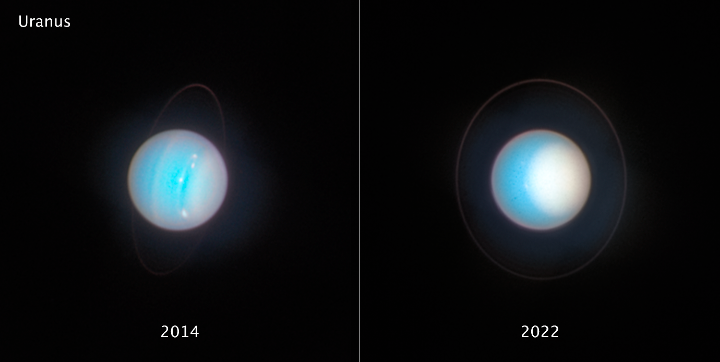Comments
[deleted] t1_jdoihat wrote
[removed]
Ranokae t1_jdonzv6 wrote
It's always weird to think about the other planets having seasons
[deleted] t1_jdoqphc wrote
[removed]
[deleted] t1_jdos173 wrote
[removed]
[deleted] t1_jdouil9 wrote
[removed]
[deleted] t1_jdoyk04 wrote
[removed]
[deleted] t1_jdpbd6f wrote
[removed]
[deleted] t1_jdpgahb wrote
[removed]
uluvmebby t1_jdpktrq wrote
It’s weird to think that anything happens
[deleted] t1_jdq1iqz wrote
[removed]
daenel OP t1_jdq2g8g wrote
And this is one has the most visible effects
thepaulgoddard123 t1_jdq4ia1 wrote
And I found the uranus joke.
porcupineapplepieces t1_jdqenwd wrote
Shame we don’t have an orbiter there :/
Would have taken forever to get there though right? Cause of the having to slow down part?
daenel OP t1_jdqfvjl wrote
Indeed! One of the main NASA decadal objective is an Uranus orbiter, we have already planned it. The mission should be launched in 2030 to reach the planet in 2040. The main problem is the fund, and it looks they don't want to invest in it, so, we risk to loose our once-in-a-lifetime chance to get there
[deleted] t1_jdqquyt wrote
[removed]
PhilsTinyToes t1_jdqta08 wrote
Or that every janky planet/moon/orbit combination probably exists somewhere doing janky nature stuff
[deleted] t1_jdqvxp4 wrote
[removed]
[deleted] t1_jdqw8wm wrote
[deleted]
[deleted] t1_jdqwwfa wrote
[removed]
towcar t1_jdr3ynj wrote
I have never even considered this idea until today. That's wild.
Nulovka t1_jdrdztf wrote
The white area appears to be getting brighter because we are seeing it more directly. Looking at it obliquely it's more faded much like looking at the sun on the horizon is more faded that when overhead because we are looking obliquely through the atmosphere. Look at the orientation of the debris ring. The dimmer view of the planet is more oblique. The white area also appears the same size going down to the same general latitude, it just looks bigger when you can see more of it.
[deleted] t1_jdrfm9w wrote
[removed]
[deleted] t1_jdrlb5k wrote
[removed]
christophski t1_jdsi7le wrote
FYI a year on Uranus lasts 84 earthican years
mrev_art t1_jdsname wrote
It is interesting how it goes from smooth to super textured and busy and then back to smooth.

daenel OP t1_jdoi0on wrote
"As seen in 2022, Uranus’s north pole shows a thickened photochemical haze that looks similar to the smog over cities. Several little storms can be seen near the edge of the polar haze boundary. Hubble has been tracking the size and brightness of the north polar cap and it continues to get brighter year after year. Astronomers are disentangling multiple effects — from atmospheric circulation, particle properties, and chemical processes — that control how the atmospheric polar cap changes with the seasons. At the Uranian equinox in 2007, neither pole was particularly bright. As the northern summer solstice approaches in 2028 the cap may grow brighter still, and will be aimed directly toward Earth, allowing good views of the rings and the north pole; the ring system will then appear face-on. This image was taken on 10 November 2022."
Source: https://www.esa.int/Science_Exploration/Space_Science/Hubble_monitors_changing_weather_and_seasons_on_Jupiter_and_Uranus